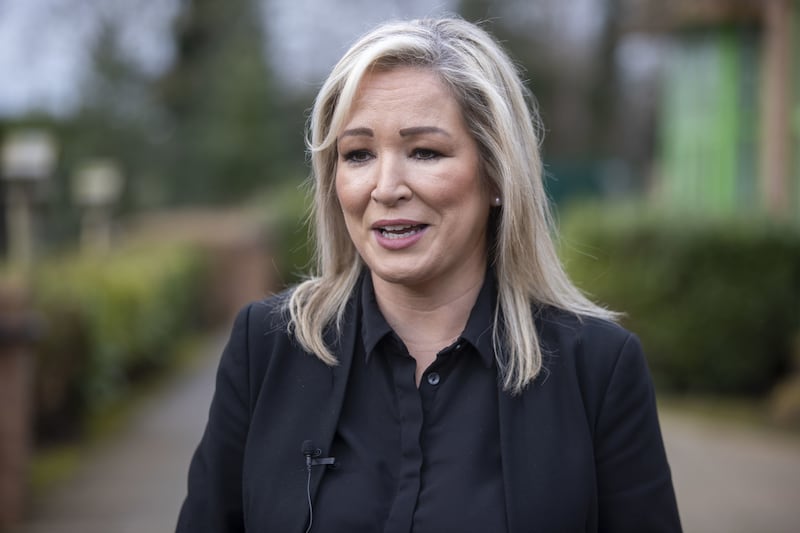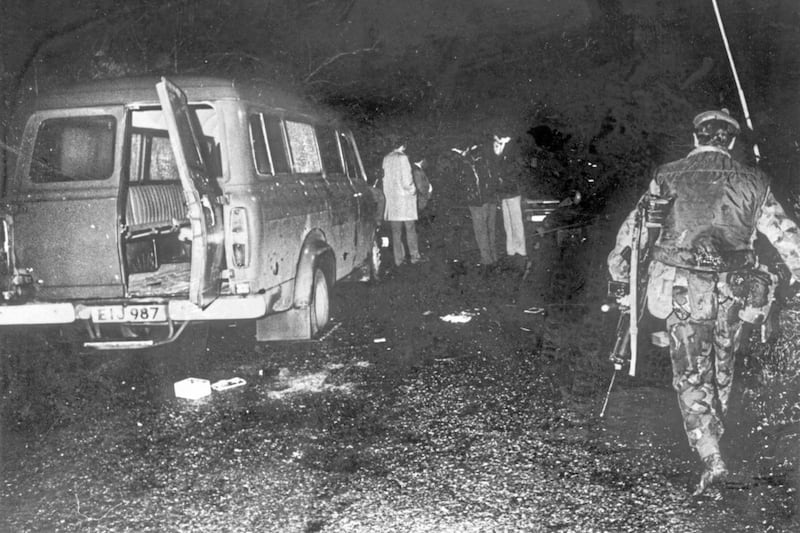SECURITY force briefing papers used by Ian Paisley in 1999 to name alleged suspects in the Kingsmill atrocity, had been 'doctored' to include members of Catholic south Armagh farming families including a boy who just 11-years-old at the time.
The papers which refer to the murder of 10 Protestant workmen in January 1976, include the names of around a dozen suspects.
The information is contained in a dossier dated January 12, 1976, a week after the IRA ambushed a work van carrying 12 men.
Ten Protestant workmen were shot dead in the attack.
The gunmen had asked the workers about their religion, before telling the one Catholic man on the bus to leave.
Another workman Alan Black survived the attack despite being shot 18 times.
In 1999 using parliamentary privilege former DUP leader Ian Paisley used what he said was the police dossier to name Co Armagh farmer Eugene Reavey as the mastermind of the attack.
As a result Mr Reavey was forced to fight a lengthy battle to clear his name.
Mr Reavey's three brothers were shot in a sectarian attack the night before the Kingsmill massacre.
John Martin (24) and Brian (22) died at the scene, Anthony (17) died three weeks later from his injuries.
Three members of the O'Dowd family were also shot on the same night by a UVF gang that it was believed were acting in collusion with members of the UDR.
A Historical Enquiries Team report later cleared the Reavey family of any wrongdoing and apologised for the way they had been treated by the then RUC.
They confirmed that no member of the Reavey family had any paramilitary connections or convictions.
Despite this Ian Paisley refused to apologise to Mr Reavey.
The Irish News has now seen parts of the dossier which confirms that out of a dozen names only four were members of the IRA at the time.
The rest were members of Catholic farming families with no republican connections and included Eugene Reavey.
Out of the four IRA suspects one was able to prove his innocence because a Garda officer was in his home at the time of the Kingsmill attack about an unrelated matter.
The other three IRA suspects listed were on the run in the Republic at the time.
One of the three currently lives in America and one later received a so-called On The Run (OTR) letter as part of an agreement between Sinn Féin and Tony Blair's Labour administration.
While all four were questioned about Kingsmill they were all released without charge.
Veteran republican Colm Murphy, who the Irish News revealed on Saturday has been linked to a palm print found on a van connected to the Kingsmill attack, is not named in the briefing documents.
In 1999 and during a later civil case taken by Mr Reavey against Ian Paisley, the then Chief Constable Ronnie Flanagan denied that the RUC had leaked the dossier.
The Irish News now understands that the original briefing note was altered by a person with close links to the UDR who tried to blacken the name of Mr Reavey and his family in order to justify the sectarian murders of his brothers the previous day.
Speaking to the Irish News Mr Reavey said the claims had a "terrible and lasting impact on my family".
He also said that the HET could find no similar documents record and concluded that the dossier had been 'doctored' to discredit his family.
"Shortly after Paisley read out my name I went to a cattle sale and men I'd known all my life turned their backs on me. It took an awful toll on my family who were still grieving.
"If there hadn't been a ceasefire at the time I really think we'd have been in trouble, I think we'd have all been killed and that's the truth.
"When the HET cleared not just my name but said categorically that no member of my family were connected to any paramilitary group it was a relief, but it doesn't for one second change what was a terrible injustice suffered by my family and all those falsely implicated in those documents.
"I received an apology from the HET but my thoughts are still with the Kingsmill families for they have been failed by the state that they put their trust in," Mr Reavey added.







